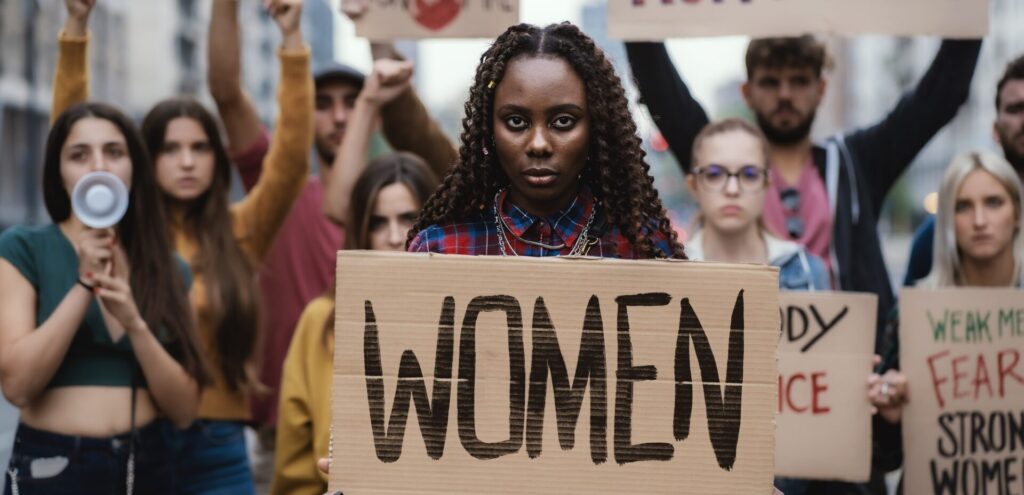The Supreme Court abortion ruling
On June 24, 2022, the Supreme Court of the United States handed down a decision that sent shockwaves across the nation. By ruling that the Constitution does not confer a right to abortion, the Court overturned decades of precedent established by Roe v. Wade and Casey v. Planned Parenthood of Southeastern Pennsylvania. This decision, tied to Dobbs v. Jackson Women’s Health Organization, fundamentally altered the landscape of women’s rights in America.
This is not just a ruling; it’s a reckoning.
Supreme Court Abortion Ruling Relies on Archaic Laws
Justice Alito’s opinion leaned heavily on laws from the 13th and 17th centuries, arguing that abortion rights were not deeply rooted in the nation’s history. Let that sink in: a ruling in 2022, affecting millions of women, relied on interpretations of laws written in a time when women were considered property.
The question we need to ask is simple: how can we justify using centuries-old legal precedents to shape decisions about modern women’s bodies and lives? These laws were written before electricity, antibiotics, or even the idea that women could vote. Yet, somehow, they’re being used to dictate our autonomy today.
Rights Not Listed in the Constitution
The Constitution does not explicitly list many rights we consider fundamental today—such as the right to privacy, the right to vote, or the right to a fair trial. These rights have been upheld through judicial interpretation over the years, yet the Supreme Court abortion ruling challenges this framework.
If the Constitution doesn’t explicitly protect these rights, does that mean they’re next on the chopping block? Should Americans brace for a future where other freedoms, once considered secure, are suddenly up for debate?
This ruling isn’t just about abortion. It’s a signal flare, warning us that no right is untouchable if it isn’t written in black and white in a document drafted centuries ago.
Supreme Court Argues “Safe Haven” Laws
Justice Alito pointed to “safe haven” laws as a solution to unwanted pregnancies, implying that women can simply carry a pregnancy to term and relinquish the baby without long-term consequences.
But here’s the reality: this argument ignores the staggering number of children already in foster care—424,000 and counting. It also disregards the physical, emotional, and financial toll of pregnancy, especially for women who lack adequate healthcare or support systems.

Pregnancy isn’t a minor inconvenience. It’s life-changing, and suggesting “safe haven” laws as a universal fix shows a lack of understanding and empathy for the complexities women face.
Political Power and the 2020 Election: Are Women’s Rights Being Undermined?
The ruling references women’s political power, highlighting their significant participation in the 2020 election. In Mississippi, for example, women made up 51.5% of the population and 55.5% of voters.
But let’s be clear: citing a single election year as justification for stripping away rights is a weak argument. Voting power does not erase systemic inequalities or the long history of women being denied autonomy. The fact that women participate in elections doesn’t mean their rights are secure—if anything, it underscores the importance of continuing the fight for equality.
State Laws and Women’s Health: The Immediate Consequences
The Supreme Court abortion ruling triggered a wave of state laws that severely restrict or outright ban abortion. Many of these laws were drafted in the 1800s and reflect outdated views rather than contemporary medical and ethical standards.
The immediate impact? Women in restrictive states now face increased risks to their health and well-being. Some may be forced to travel hundreds of miles to access care, while others may resort to unsafe methods. This isn’t about protecting life—it’s about control.
The Supreme Court’s Broader Implications: What’s Next for Women’s Rights?
Justice Thomas’s suggestion to revisit other rights, such as contraception and same-sex marriage, should alarm every American. These rights, while not explicitly stated in the Constitution, have been upheld as essential to personal freedom.
If the logic behind the Supreme Court abortion ruling is applied to other cases, the consequences could be far-reaching. How many other hard-fought victories are now at risk of being undone?
Women’s Rights and Constitutional Limitations
The Constitution was written by men, for men, in a time when women had little to no agency. Over the years, amendments have addressed some of these injustices, but the overturning of Roe v. Wade shows how fragile progress can be.
This ruling isn’t just a setback—it’s a challenge. What will it take for women to unite and demand equal rights without legal restrictions?
If this moment teaches us anything, it’s that complacency is not an option. Women’s rights are not guaranteed; they are fought for, defended, and redefined every day. The Supreme Court abortion ruling is a reminder that the fight for autonomy and equality is far from over.
Follow for more of my Thoughts and Things.
-
A Touch Dead
$10.00 -
A Touch Divine
$10.00 -
Ascension Descension – Hell’s Hottest Reality Show
$10.00
Kristy Kelly



